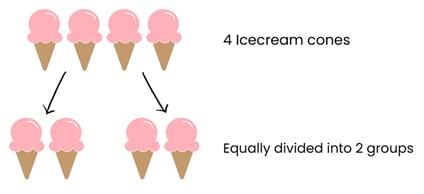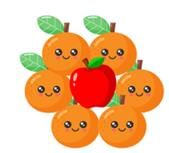Class 4 Exam > Class 4 Tests > Test: Patterns Around Us - Class 4 MCQ
Test: Patterns Around Us - Class 4 MCQ
Test Description
15 Questions MCQ Test - Test: Patterns Around Us
Test: Patterns Around Us for Class 4 2025 is part of Class 4 preparation. The Test: Patterns Around Us questions and answers have been prepared
according to the Class 4 exam syllabus.The Test: Patterns Around Us MCQs are made for Class 4 2025 Exam.
Find important definitions, questions, notes, meanings, examples, exercises, MCQs and online tests for Test: Patterns Around Us below.
Solutions of Test: Patterns Around Us questions in English are available as part of our course for Class 4 & Test: Patterns Around Us solutions in
Hindi for Class 4 course.
Download more important topics, notes, lectures and mock test series for Class 4 Exam by signing up for free. Attempt Test: Patterns Around Us | 15 questions in 20 minutes | Mock test for Class 4 preparation | Free important questions MCQ to study for Class 4 Exam | Download free PDF with solutions
Test: Patterns Around Us - Question 1
Which number is different from the others?
12, 14, 17, 20
Detailed Solution for Test: Patterns Around Us - Question 1
Test: Patterns Around Us - Question 2
What is the total number of odd numbers between 1 and 100?
Detailed Solution for Test: Patterns Around Us - Question 2
Detailed Solution for Test: Patterns Around Us - Question 3
Test: Patterns Around Us - Question 4
Which of the following demonstrates a correct pattern involving even and odd numbers?
Detailed Solution for Test: Patterns Around Us - Question 4
Detailed Solution for Test: Patterns Around Us - Question 5
Detailed Solution for Test: Patterns Around Us - Question 6
Test: Patterns Around Us - Question 7
How can one identify even numbers using the 2-times table?
Detailed Solution for Test: Patterns Around Us - Question 7
Detailed Solution for Test: Patterns Around Us - Question 8
Test: Patterns Around Us - Question 9
If you list 10 consecutive numbers starting from 1, what pattern do they follow in terms of odd and even numbers?
Detailed Solution for Test: Patterns Around Us - Question 9
Detailed Solution for Test: Patterns Around Us - Question 10
Test: Patterns Around Us - Question 11
A shape pattern is shown. The rule is "Circle, Square, Triangle." Select all of the true statements about the repeating pattern.
-
B. The next shape is a circle. -
C. The next shape is a square -
D. none of the above
Detailed Solution for Test: Patterns Around Us - Question 11
-
A. 190, 380 -
B. 182, 364 -
C. 192, 382 -
D. 192, 384
Detailed Solution for Test: Patterns Around Us - Question 12
-
A. 
-
B. 
-
C. 
-
D. 
Detailed Solution for Test: Patterns Around Us - Question 13
-
A. 
-
B. 
-
C. 
-
D. 
Detailed Solution for Test: Patterns Around Us - Question 14
-
A. 12
-
B. 13
-
C. 14
-
D. 15
Detailed Solution for Test: Patterns Around Us - Question 15
Information about Test: Patterns Around Us Page
In this test you can find the Exam questions for Test: Patterns Around Us solved & explained in the simplest way possible.
Besides giving Questions and answers for Test: Patterns Around Us, EduRev gives you an ample number of Online tests for practice
Download as PDF



















